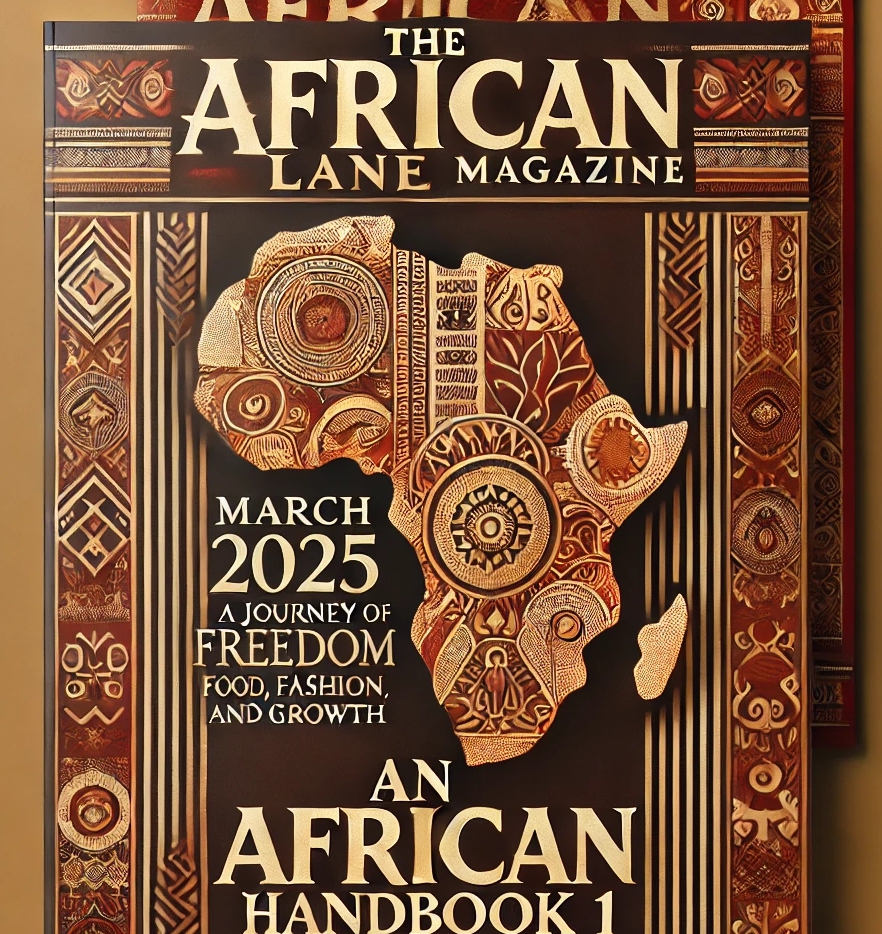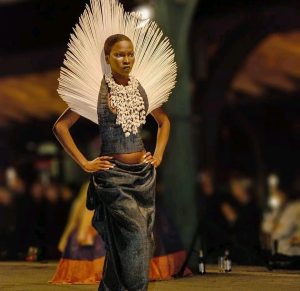Ndebele People of South Africa

The Southern Ndebele and they are concentrated in the Limpopo and Northwest provinces of South Africa. (Wikipidia)
Ndebele art has always been an important identifying characteristic of the Ndebele. Apart from its aesthetic appeal it has a cultural significance that serves to reinforce the distinctive Ndebele identity. The Ndebele’s essential artistic skill has always been understood to be the ability to combine exterior sources of stimulation with traditional design concepts borrowed from their ancestors.
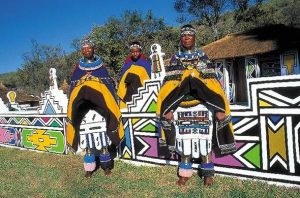
Ndebele artists also demonstrated a fascination with the linear quality of elements in their environment and this is depicted in their artwork. Painting was done freehand, without prior layouts, although the designs were planned beforehand.
The characteristic symmetry, proportion and straight edges of Ndebele decorations were done by hand without the help of rulers and squares. Ndebele women were responsible for painting the colourful and intricate patterns on the walls of their houses.
This presented the traditionally subordinate wife with an opportunity to express her individuality and sense of self-worth. Her innovativeness in the choice of colours and designs set her apart from her peer group. In some instances, the women also created sculptures to express themselves.
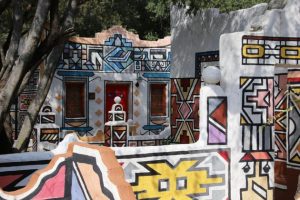
The back and side walls of the house were often painted in earth colours and decorated with simple geometric shapes that were shaped with the fingers and outlined in black. The most innovative and complex designs were painted, in the brightest colours, on the front walls of the house.
The front wall that enclosed the courtyard in front of the house formed the gateway (izimpunjwana) and was given special care. Windows provided a focal point for mural designs and their designs were not always symmetrical.
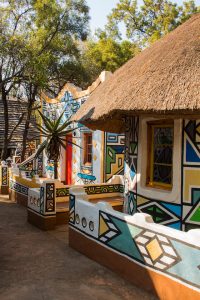
Sometimes, makebelieve windows are painted on the walls to create a focal point and also as a mechanism to relieve the geometric rigidity of the wall design. Simple borders painted in a dark colour,lined with white, accentuated less important windows in the inner courtyard and in outside walls.
Contemporary Ndebele artists make use of a wider variety of colours (blues, reds, greens and yellows) than traditional artists were able to, mainly because of their commercial availability. Traditionally, muted earth colours, made from ground ochre, and different natural-coloured clays, in white, browns, pinks and yellows, were used. Black was derived from charcoal.
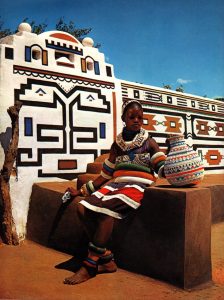
Today, bright colours are the order of the day. As Ndebele society became more westernised, the artists started reflecting this change of their society in their paintings. Another change is the addition of stylised representational forms to the typical tradtional abstract geometric designs.
Many Ndebele artists have now also extended their artwork to the interior of houses. Ndebele artists also produce other crafts such as sleeping mats and isingolwani.
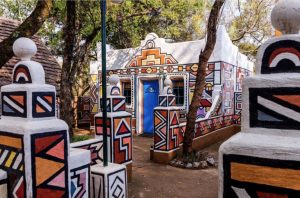
Isingolwani (colourful neck hoops) are made by winding grass into a hoop, binding it tightly with cotton and decorating it with beads. In order to preserve the grass and to enable the hoop to retain its shape and hardness, the hoop is boiled in sugar water and left in the hot sun for a few days.
A further outstanding characteristic of the Ndebele is their beadwork. Beadwork is intricate and time consuming and requires a deft hand and good eyesight. This pastime has long been a social practice in which the women engaged after their chores were finished but today, many projects involve the production of these items for sale to the public.
For more details of Ndebel people visit
